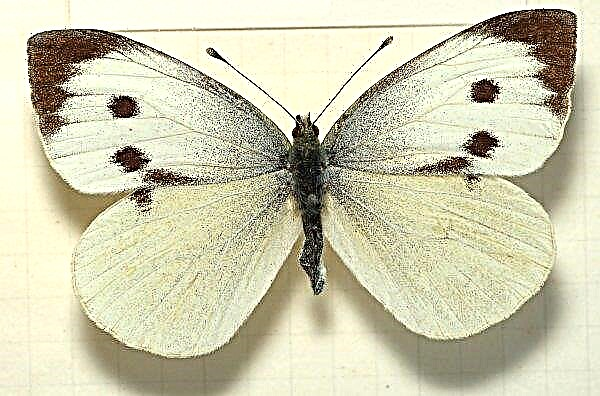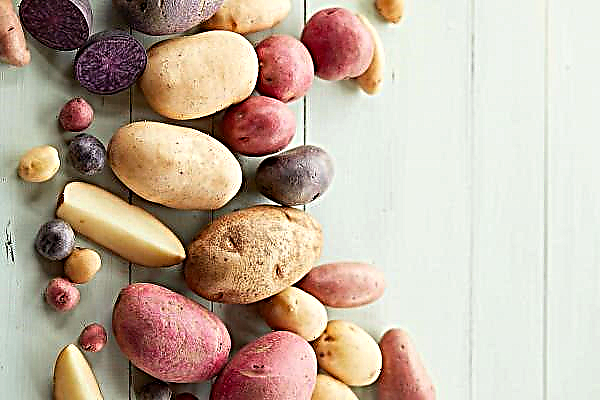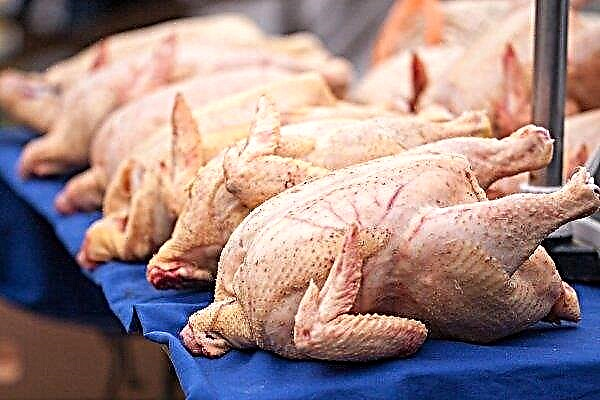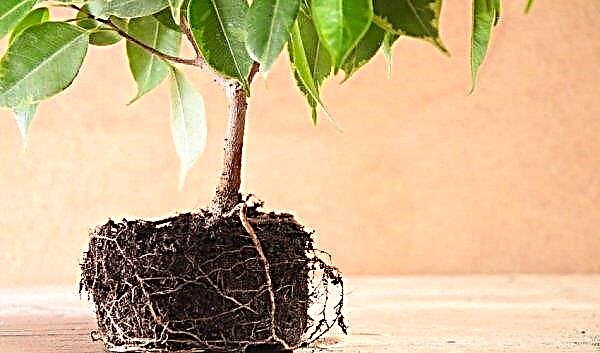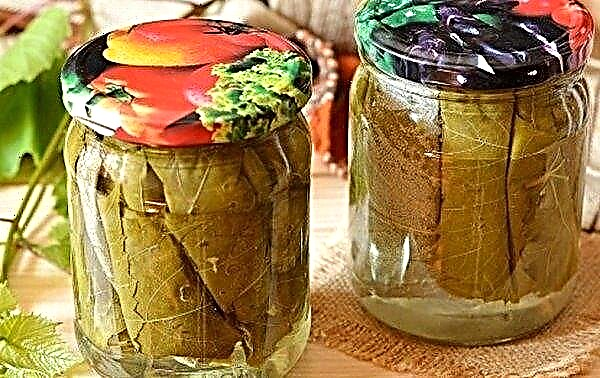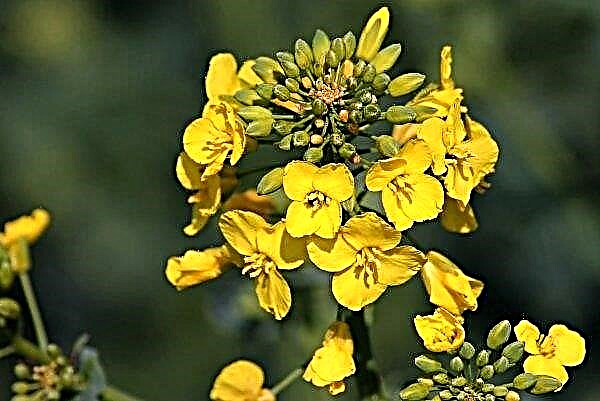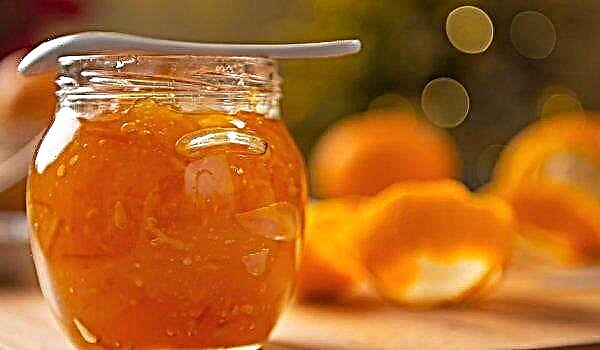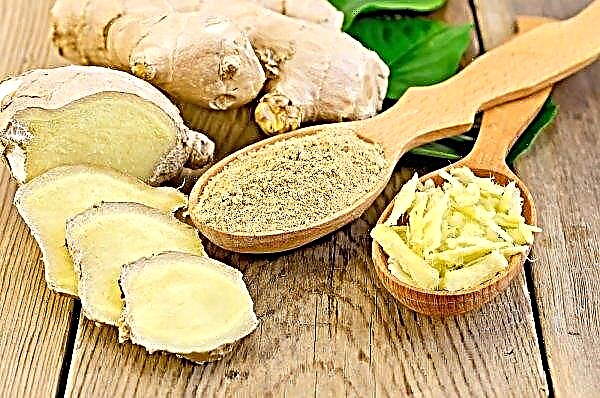Roicissus is one of those plants that is not given enough attention today. It is less common than violets or other decorative-flowering plants, but at the same time it has many advantages, in particular, expressed in its unusual appearance (resembles a small birch) and ease of care. How to grow a mini-tree in your house and what you need for its active growth and development - we will talk about this later.
Botanical description of the plant
Roicissus is an evergreen ornamental deciduous plant, characterized by good branching. This liana belongs to the grape family, the genus roicissus, which combines more than 10 different species of liana-shaped plants. In the wild, it can be found in South Africa, and in the middle zone it is often grown in greenhouses and as a room crop.
Roicissus can reach 2-3 m in length, growing in the first year of life up to 60-100 cm. Leaves - arranged alternately, depending on the species, can be simple or complex. The trunk is flexible, with small processes and oppositely located leaf plates. With age, the liana trunk becomes lignified and more and more resembles a thin vine. High branching is the main cause of pruning, without which the leaves can become smaller and roicissus will lose its decorative functions. The fruit of roicissus is a berry.
Did you know? Rainforests comprise 33% of vines, while in European forest zones there are no more than 2% of loaches, which may be representatives of 200 different species.
Main types
The list of possible varieties of the described plant has up to 12 names, but the following are considered the most common:
- Roicissus rhombic. In the natural environment of growth, it is either a vine, up to 20 m long, or a bush, about 6 m wide. The houseplant is much smaller, but consists of the same main parts: light green, leathery, complex leaves with pointed edges and red hairs in the lower parts; small, roundish fruits that can be eaten. The color of the fruit is dark red or purple.
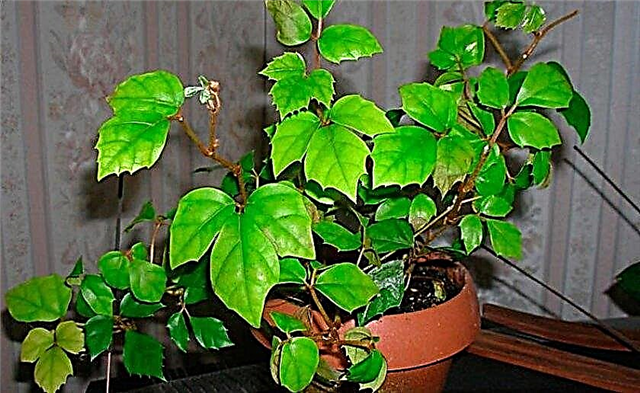
- Roicissus Cape - a liana, characterized by rapid growth and characterized by large leaf blades, about 20 cm wide. All of them are solid, lobed, smooth on top and reddish, slightly pubescent underneath. In a young plant, they may be reddish, but with age they acquire a light green color. As in the previous case, dark red fruits can be eaten.
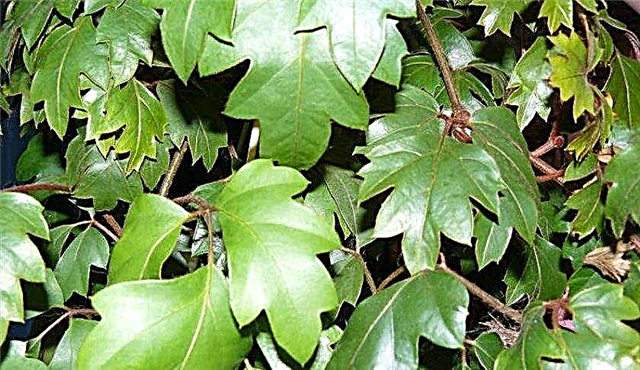
- Roicissus felt - liana-like plant, which in tropical forests can reach 20 meters in length or have the shape of a bush, up to 7 m in height. In the young specimen, all shoots are gently pubescent, but with age, the hairs disappear. The antennae of the liana are velvety to the touch, the leaves are simple, rounded, whole-edge, with a diameter of up to 20 cm. Each leaf plate has shallow teeth at the ends, a slightly wavy, smooth upper side and the lower one covered with red hairs.
In young felt roicissuses, the leaves have a saturated dark green color, but with age it is replaced by raspberry, which remains until the leaf fall period. Flowers - cream-green color, small size, collected in a brush. The fruits are black-red, edible.Important! When choosing a specific variety for your home, it is advisable to pay attention to the Cape and rhombic roicissuses, since in comparison with other representatives of the genus they are easier to adapt to room conditions and their growth is easier to control.

- Three-toothed roicissus. In the natural environment of growth, represented by a 10-meter vine or small shrub reaching a 3-meter height. The entire surface of young shoots is covered with orange-red hairs. Leaves are complex (the leaf plate is divided into 3 parts), obovate, slightly serrated at the ends. On top, the dark green surface of the leaf blades is smooth, leathery and shiny, and in the lower part it is lighter and slightly pubescent. Flowers are small, green-yellow in color, with a slight greenish tint. Fruits are red-black, rounded, with a diameter of up to 2 cm.

- Palm roicissus - Liana-like plant, with shoots up to 15 m long or bush, about 4 m high. Lianas of young plants have red-brown hairs, but with age they thin and disappear. Dark green leaves consist of 4-5 parts, all of them are solid, with a smooth leathery surface on top and "rusty" hairs below. Creeper flowers are small, greenish yellow. Fruits are black-red, rounded, with a diameter of 1.5 cm.

Useful properties and harm
First of all, it should be noted the complete absence of the harmful effect of the liana on the human body, on the contrary, it has a number of useful things that can be useful to completely different people. So, this plant is useful for those who are accustomed to the constant cleaning of the house and cannot get rid of the obsessive feeling of excessive cleanliness, the need to restore order.
In terms of maintaining health, indoor birch is appropriate in the fight against gastrointestinal diseases and helps to increase the protective functions of the body, making it more resistant to negative environmental influences.
And finally, roicissus will be an excellent solution for those gardeners who just want to plant greenery in their homes, but can't spend much time on indoor plants. With minimal attention, the liana is able to surprise with its appearance, introducing a certain sophistication into the interior of almost any room.
House growing conditions
Despite its unpretentiousness, the described vine still requires compliance with certain conditions of cultivation and care. First of all, this concerns the proper placement in the room, sufficient watering and fertilizer.
Seat selection
For good health, roicissus needs prolonged but not bright lighting. Direct sunlight is detrimental to creeper leaves, and even with short exposure can cause them to change color. Given this, when choosing a place to place the pot, it is advisable to give preference to the south or west side of the house.
During dormancy, the birch can be placed inside the room, maintaining the average temperature values within + 15 ° C. In the summer, the plant will feel great on the balcony or even outdoors, the main thing is to protect it from direct sunlight and protect it from drafts.
If there is not enough space for the creeper near the windows, you can leave it away from them. For example, shoots hanging from a pot will look great when placed in floor flower stands located at the corners of a room.
Temperature and humidity
The optimum temperature for the growth of roicissus will be + 16 ... + 25 ° C in the warm season, and about + 12 ... + 15 ° C during winter dormancy. At the same time, the humidity level in the room does not play a big role and can be maintained within standard limits of 50-60%.
Important! If the leaves of the vine begin to dry at the tips, then the available moisture level is not enough and you will have to periodically spray the plant from the spray gun.
Home Care
Regular watering, timely top dressing and pruning of the plant are indispensable components of the good appearance of roicissus, so it is useful for each grower to know about some of the nuances of their implementation.
Watering
A room birch tree prefers frequent and plentiful application of a soft liquid, without lime impurities and other undesirable additives that can get to the root system along with ordinary tap water. In order to avoid the accumulation of salts and heavy metals in the soil, it is advisable to pre-filter or at least stand the water, at the same time raising its temperature to room values.
Regarding the regularity of watering, then you have to monitor the condition of the top soil layer: as soon as it dries 1-2 cm deep, you can take on a watering can. Both upper and lower watering are allowed, only in any case it is better to drain the remaining water from the sump so as not to provoke rotting of the root system of the vine.
In winter, watering regularity is usually reduced, but if the room is hot, then this is not required and you can still focus on the state of the top layer of the substrate. In extreme heat, spraying leaflets from the spray gun is welcomed, which will not only increase the humidity in the room, but also save the plant from accumulated dust.
Important! Trying to determine the irrigation norms of the roicissus, do not forget to take into account the characteristics of its landing capacity. In ceramic pots, water evaporates faster, therefore, it will be necessary to water the vine more often than when grown in plastic products.
Top dressing
The optimal solution for feeding roicissus is to apply liquid fertilizers at the same time as watering, about 1 time in 14 days during the warm season (from March to the end of October). As a nutritional composition, you can use any universal preparations intended for indoor decorative foliage plants (for example, "Agricola"). With a lack of important trace elements in the soil, roicissus begins to lag behind in growth, and its leaves quickly turn yellow.
Pruning
Given the natural length of the vine, pruning is one of the essential components of care, especially since the plant itself tolerates any cutting and shaping. Usually, the shoots are cut off at the level desired to limit the growth of roicissus, if possible performing the procedure in early spring. In addition, at this time it is worthwhile to carry out sanitary pruning, removing all bare, thinned or damaged shoots of the plant. If you are afraid to completely cut them, then just shorten them to the size of hemp.

Support
Many flower growers do not use a support to support thin and sufficiently ductile shoots of a room vine, which can significantly damage its appearance. To create attractive and densely leafy shoots, stable and rigid ladders or trellises will help, with the help of which flower growers create green screens or even walls, though to completely cover the surface you have to manually guide the shoots, combining garter and trim, until the desired result is achieved.
Transfer
The annual transplant of roicissus is performed only in the first few years of the development of a young plant, which is explained by the intensive growth and rapid consumption of nutrients from the soil. Adult plants are replanted only when necessary, when the previous pot became small and the roots completely “mastered” the earthen lump. On average, it takes about 2-3 years.
There are no strict requirements for the timing of the transplantation of the liana, because the procedure can be performed both at the very beginning of its active development, and throughout the spring period. The new planting capacity should be at least 3-4 cm larger than the previous one so that the plant feels free for the next 2-3 years. A drainage layer is necessarily laid at the bottom of the pot, a support is installed and a small amount of the soil mixture is covered with equal parts of leaf and sod land, humus and half of the river sand (optimal pH is 6.0).Did you know? The so-called rattan palm possesses the longest vines, the shoots of which extend 200–250 m from the center.
After that, perform the following transplant actions:
- The plant is removed from the old pot by transshipment.
- Put it in a new container and cover it with earth.
- Gently watered with a small amount of water.
Video: transplant of roicissus (cissus)
Immediately after transplanting, it is recommended to perform watering procedures as often as possible, but using a small amount of liquid to moisten the soil. In the first 2 days, it is recommended to place the transplanted vine in a shady or semi-shady area, and only after that return to the usual place of cultivation. It is advisable to postpone feeding for at least 4 weeks after transplantation.
How to breed at home
In the presence of the mother plant, the most successful option for the propagation of roicissus is cuttings, since the rooting and further development of the taken part occurs faster than the germination of seeds. However, you should not completely abandon the seed method of cultivation, because in some cases it turns out to be the only possible one. Consider the features of each option.
Cuttings
To obtain a new plant, the apical part is usually cut from the mother bush, with at least 2 internodes. Of course, only an adult and fully healthy plant is suitable for harvesting such cuttings, which will give more guarantees for the successful rooting of the cut part.
Important! Sometimes, other parts of the plant obtained as a result of planned pruning can be used to propagate birch trees by cuttings.
The rooting process can take place both in clean warm water, and in a mixture of sand and peat, and a plastic cap over the handle will help speed it up. All the time of rooting in the room, it is necessary to maintain temperature values within + 20 ... + 23 ° C and raise the hood only for spraying the soil or airing the planting material.
After the roots appear on the cuttings, they can be transplanted into an ordinary small pot (not more than 8 cm in diameter) filled with soil for adult plants.
Video: propagation of roicissus by cuttings
Reproduction of roicissus in this way is almost always successful, because the first roots appear on the planted cuttings in a few weeks. The optimal time for planting planting material is March-April.
It happens that in the process of transplantation, the plant can be propagated by dividing the rhizome, but it is advisable to perform this procedure only with the appropriate experience, so as not to injure the plant with a careless action.
Seeds
The soil for planting seeds of house birch is prepared according to the same recipe as for adult plants during transplantation. Its composition must necessarily include sand, humus, leaf and sod land, with the addition of river sand (optimal proportion 1/2: 1: 1: 1). Deepening the seeds is desirable no more than 1 cm, however, even in this case, high germination cannot be guaranteed. At room conditions, seeds are rarely tied, and flowering of an adult plant is almost impossible. For this reason, it is desirable to propagate roicissus by cuttings.

Possible growing difficulties
Any houseplant can get sick or reduce its decorative effect due to violations of the rules of care, therefore it is not surprising that when growing a room birch, a flower grower may encounter one of the following problems:
- Leaf color fades. The main reason is the lack of useful minerals and trace elements in the soil, which must enter the substrate along with fertilizers. Try replacing the composition used or increasing its dosage.
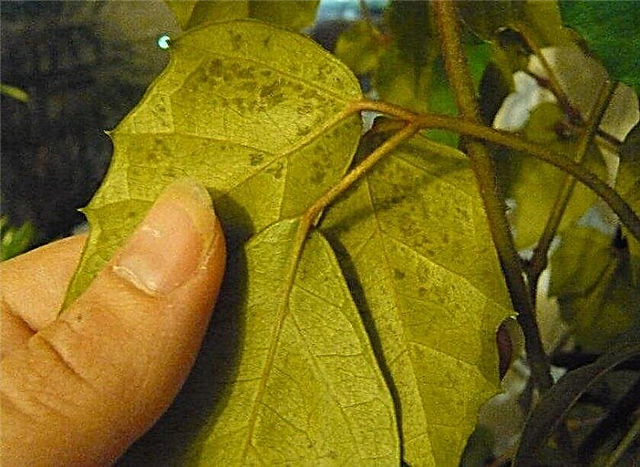
- Leaves frown and become dark spots., the reason for which is often insufficient watering and excessive air dryness. In addition, under such conditions, the sheet plates can bend and change shape.
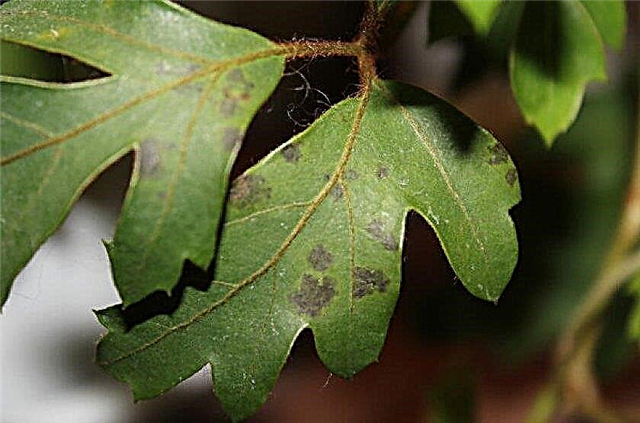
- Leaves dry and shoots shrink. Perhaps it is necessary to reduce the abundance of watering and temporarily cancel spraying, which will help reduce air humidity.
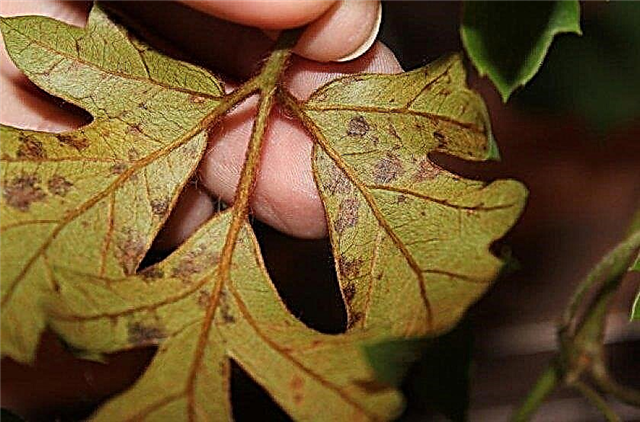
- Profuse leaf loss - A frequent sign of root rot development or a consequence of sharp temperature fluctuations in the room.
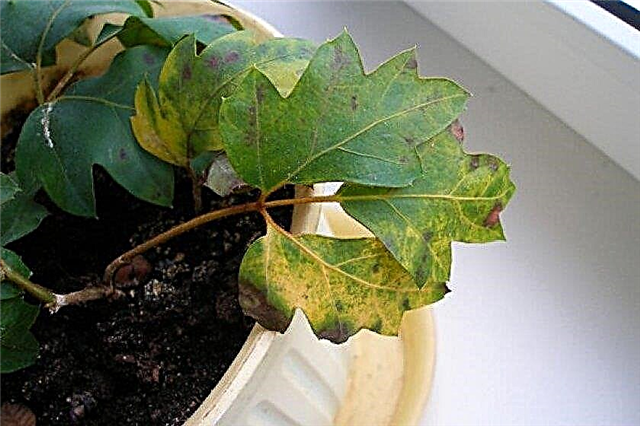
- Slow growth. If in the cold season this phenomenon can be explained by the dormant period of roicissus, then the limited growth in the summer most likely indicates a lack of nutrient components in the soil. Revise the nutritional plan or replace the nutritional formula used.
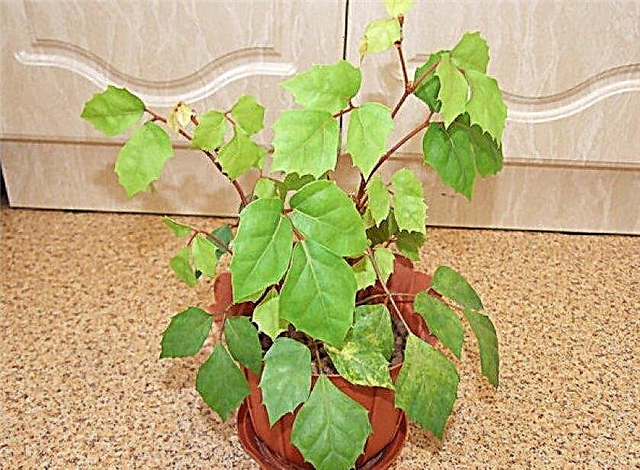
Having put a little effort into growing roicissus, very soon you will get an excellent vine, which can become a good addition to the interior, and how and where to place it for greater decorativeness - each grower can decide for himself.











